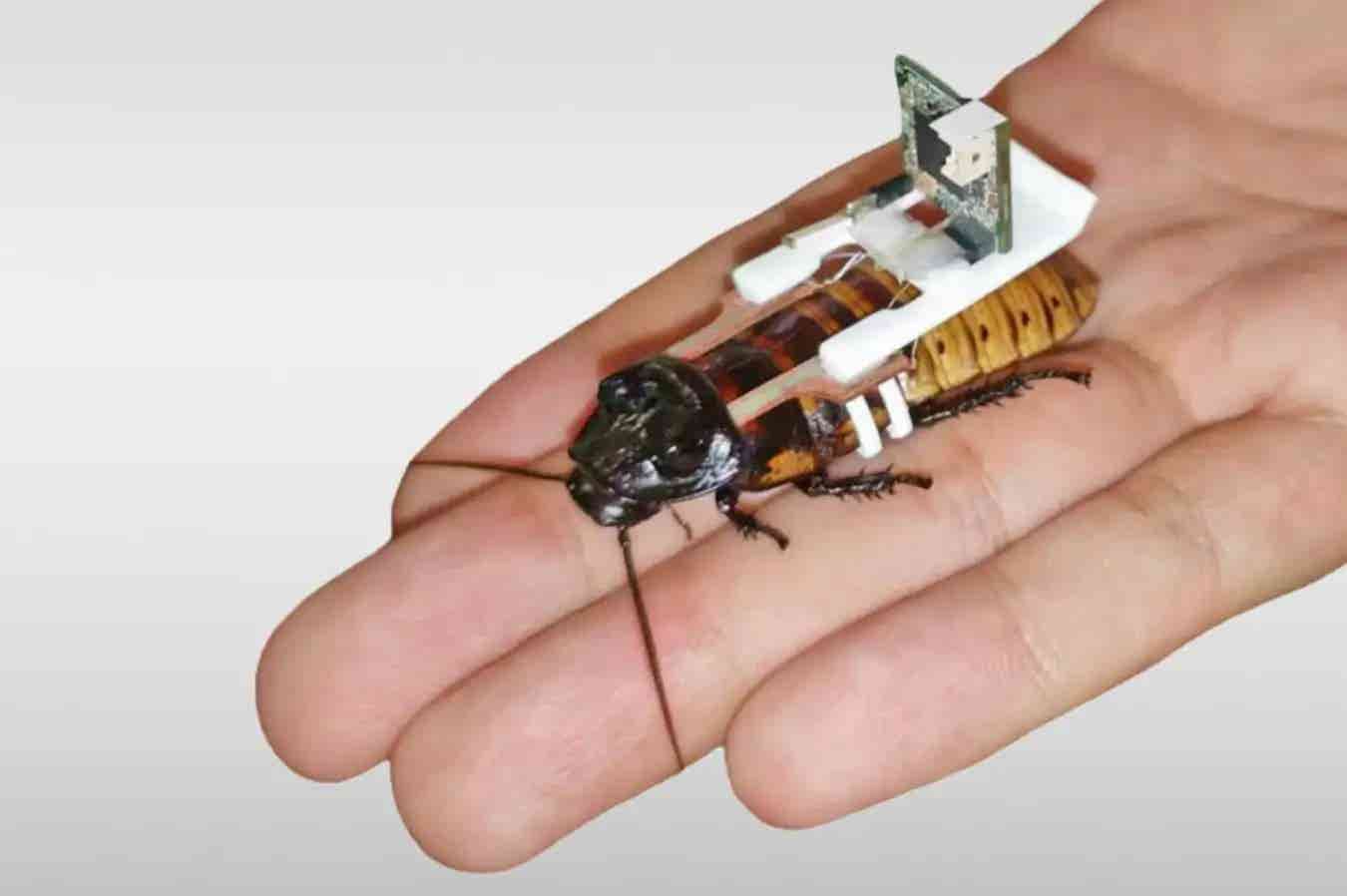Cyborg insect swarms transform agriculture and disaster response
Discover how cyborg swarms, blending biology and robotics, are transforming disaster response, agriculture, and infrastructure inspection.

Cyborg insects equipped with advanced swarm algorithms are redefining robotics, offering energy-efficient solutions for disaster relief and precision farming. (CREDIT: Hirotaka Sato, Nanyang Technological University)
Cyborg insects are redefining the future of robotics and swarm navigation. By blending living organisms with advanced electronic systems, these innovative biohybrids offer energy efficiency, adaptability, and an unprecedented ability to navigate challenging terrains. Recent advancements in swarm control algorithms have further expanded their potential, unlocking applications in disaster response, infrastructure inspection, and precision farming.
Traditional robotic platforms like UAVs and UGVs are limited by size, mobility, and energy constraints. These limitations often hinder their performance in confined or obstacle-laden environments. Enter cyborg insects—biological organisms enhanced with miniature electronic controllers that allow for remote operation. Unlike conventional robots, these hybrids leverage the natural mobility of insects, requiring minimal energy while excelling in adaptability.
The control of individual cyborg insects was first demonstrated in 2008, but their utility in large-scale operations, such as search-and-rescue missions, was limited. Coordinating a swarm of cyborgs presented unique challenges, including variability in individual responses to stimuli and risks of entanglement during movement.
To overcome these obstacles, researchers from institutions such as Nanyang Technological University (NTU) Singapore, Osaka University, and Hiroshima University developed an advanced swarm navigation algorithm.
Published in Nature Communications, this new algorithm represents a significant advancement in swarm robotics. It introduces a leader-follower dynamic, where one insect is designated as the leader, guiding the swarm to a predetermined destination. The leader’s electronic backpack communicates with those of the followers, coordinating their movements dynamically and allowing the group to adapt to obstacles or challenging terrain.
This approach minimizes the need for precise control inputs, enabling more natural navigation. For example, if a cyborg encounters an obstacle, it slows down, prompting others to maneuver around it. This cooperative behavior mirrors human strategies, such as selecting shorter checkout lines in supermarkets. Importantly, neighboring insects can assist trapped or overturned individuals, ensuring the swarm’s collective progress.
Cyborg insects consume significantly less energy compared to traditional robots, which rely on power-intensive motors. Using their natural locomotion, the insects’ legs propel lightweight circuit boards equipped with sensors, batteries, and communication devices. Electrical stimulations guide their movement, directing them to targets while allowing flexibility in response to environmental changes.
This energy-efficient design enhances endurance and operational time, critical for tasks in large or complex terrains. Experiments showed that the new algorithm reduced control interventions by 50% compared to previous methods. This not only prolonged operational time but also minimized risks such as entanglement, where insects become stuck together, potentially damaging their electronic backpacks.
Related Stories
The practical applications of cyborg swarms are vast. In disaster zones, they could play a pivotal role in search-and-rescue missions, where survivors must be located within a critical 72-hour window. Narrow spaces and unpredictable conditions often render conventional robots ineffective, but cyborg insects’ agility and adaptability make them ideal for these scenarios.
Professor Hirotaka Sato, a pioneer in cyborg insect research, envisions their use in large-scale operations. “The concept involves deploying multiple swarms to navigate and inspect obstructed regions,” he explains. Sensors on their backpacks could detect targets, such as humans or structural defects, and relay information wirelessly to control systems.
Laboratory tests demonstrated the algorithm’s efficacy in navigating sandy terrains and overcoming obstacles. Future experiments aim to validate its performance in outdoor environments, including rubble piles typical of disaster zones. Additionally, researchers plan to develop algorithms enabling more complex swarm behaviors, such as collaborative transport of large objects.
The development of the swarm control algorithm involved interdisciplinary collaboration. While NTU’s team prepared the cyborg insects and conducted experiments, researchers from Osaka and Hiroshima Universities focused on algorithm design and simulation. This synergy highlights the importance of global cooperation in advancing biohybrid systems.
Professor Masaki Ogura from Hiroshima University emphasizes the real-world potential of their work. “Our algorithm represents a breakthrough in coordinating cyborg insect swarms for complex missions. It underscores the need for control methods that go beyond theoretical models and perform effectively in practice.”
Professor Wakamiya Naoki from Osaka University adds, “Instead of forcing precise control, we embraced the insects’ natural behaviors, leading to emergent cooperation. This approach could inspire new algorithms for autonomous systems.”
The implications extend beyond robotics, offering insights into the intricate behaviors of living organisms. By harnessing these behaviors, researchers are creating intelligent systems capable of addressing real-world challenges.
As research progresses, cyborg insects could revolutionize industries such as logistics, agriculture, and environmental monitoring. In logistics, swarm algorithms could optimize route planning among vehicles, reducing costs and enhancing efficiency. In agriculture, they could support precision farming by monitoring crop health and automating tasks.
The fusion of biological and electronic systems also raises ethical and practical considerations. Ensuring humane treatment of insects and developing sustainable materials for their electronic components are critical for widespread adoption.
The journey from theoretical research to practical application exemplifies the transformative power of interdisciplinary innovation. By combining biology, engineering, and computer science, scientists are unlocking new possibilities for autonomous systems.
Cyborg swarms stand as a testament to the potential of biohybrid technology, offering solutions to some of humanity’s most pressing challenges.
Note: Materials provided above by The Brighter Side of News. Content may be edited for style and length.
Like these kind of feel good stories? Get The Brighter Side of News' newsletter.
Rebecca Shavit
Science & Technology Journalist | Innovation Storyteller
Based in Los Angeles, Rebecca Shavit is a dedicated science and technology journalist who writes for The Brighter Side of News, an online publication committed to highlighting positive and transformative stories from around the world. With a passion for uncovering groundbreaking discoveries and innovations, she brings to light the scientific advancements shaping a better future. Her reporting spans a wide range of topics, from cutting-edge medical breakthroughs and artificial intelligence to green technology and space exploration. With a keen ability to translate complex concepts into engaging and accessible stories, she makes science and innovation relatable to a broad audience.



